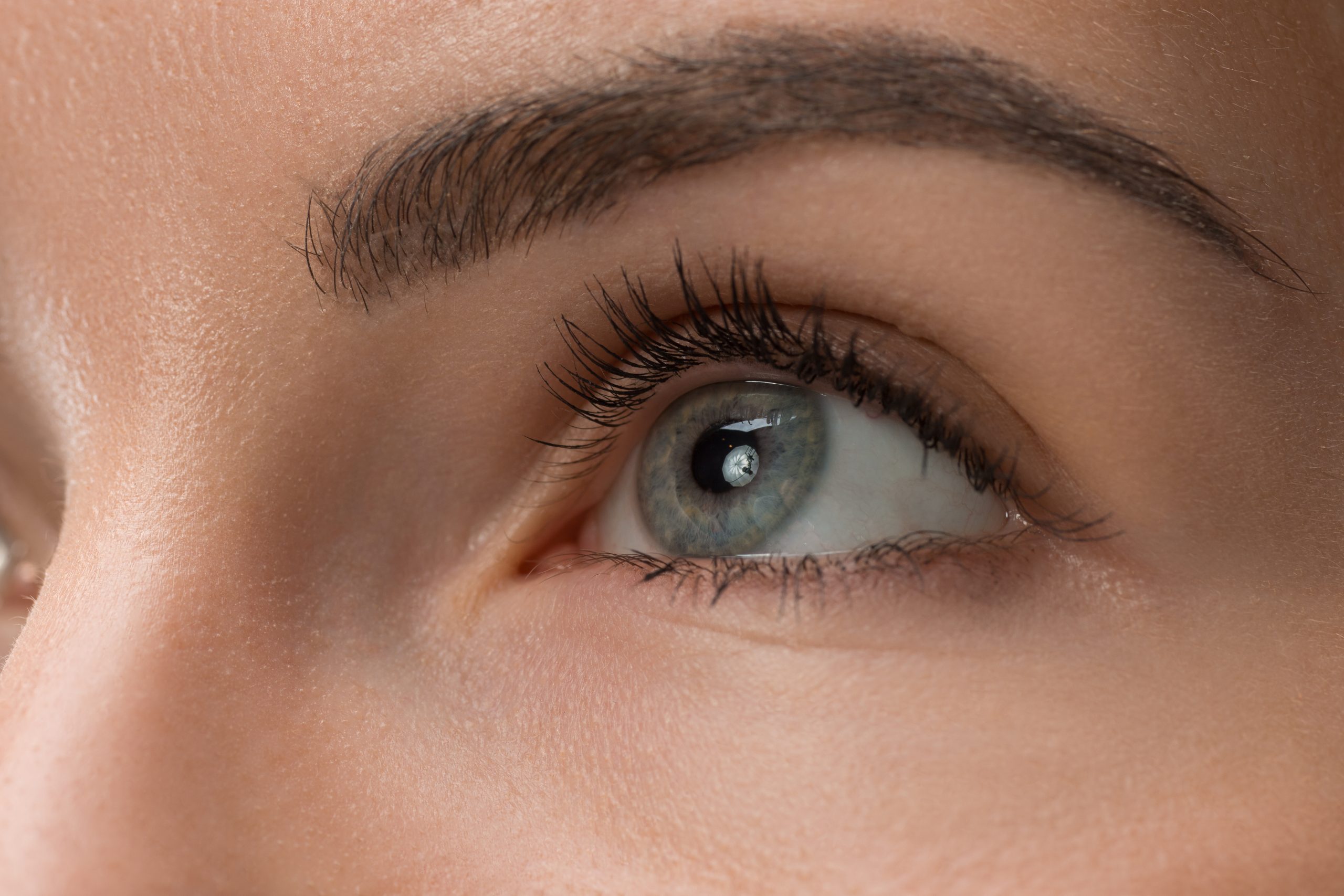The relationship between ocular manifestations and dermatological diseases is important to recognise for the appropriate management of patients, as many dermatological diseases may initially manifest with ocular findings. Early detection of ocular manifestations of dermatological diseases can help the physician make the diagnosis and manage the patient appropriately for a better therapeutic outcome. This article discusses some of the most common ocular manifestations of dermatological diseases.

Viral infections
- Herpes simplex (HSV)
The ocular manifestation of herpetic infection is mainly caused by Herpes Simplex virus type 1 (HSV-1), which is the most common cause of unilateral corneal visual damage worldwide. It typically presents with painful vesicles clustered on the periorbital skin or eyelid margins, which can cause blepharoconjunctivitis. The recurrent form of infection may cause epithelial keratitis. Other manifestations may be stromal keratitis and iridocyclitis, which can cause irreversible corneal scarring.
- Herpes zoster (HZV)
Infection with theHerpes Zoster (HZV) is a secondary infection that occurs in susceptible patients, such as the elderly and immunocompromised persons, after reactivation of latent varicella zoster virus (VVZ) primary infection. It is estimated that ophthalmic herpes zoster accounts for up to 20% of all herpes zoster cases. It typically presents with very painful, clustered vesicles on the skin in a dermatomeric distribution, innervated by the ophthalmic branch of the trigeminal nerve. Other ocular findings include conjunctivitis, keratitis and anterior uveitis; less common findings are episcleritis, scleritis and cranial nerve palsy.
Bacterial infections
- Cellulite
Preseptal cellulitis and orbital cellulitis are infections of the orbital space caused by Staphylococcus Aureus e Streptococcus. Both conditions present with an acute, unilateral onset, periorbital oedema and redness. In addition to these symptoms, patients with orbital cellulitis have impaired optic nerve function, limited ocular muscle mobility, proptosis and pyrexia. Without early diagnosis and treatment, orbital cellulitis can progress rapidly and cause blindness, meningitis, septicaemia or even death.
- Reactive arthritis
Reactive arthritis is an autoimmune disease triggered by infection and is characterised by a triad of conjunctivitis, urethritis and arthritis. Ocular findings are commonly due to infection by Chlamydia Trachomatis and include conjunctivitis (which is usually bilateral and purulent and is observed in about 70% of patients) and anterior uveitis (also commonly observed in patients with positive HLA-B27 antigen).
- Ocular syphilis
The ocular syphilis is an infection caused by Treponema Pallidum and can be congenital or acquired. Both types can have a wide variety of ocular manifestations. The ocular manifestations of early congenital syphilis are multifocal chorioretinitis, retinal vasculitis, keratitis and uveitis. The most common late manifestations of congenital syphilis are interstitial keratitis and anterior uveitis, which can also be observed in 50% patients. Acquired syphilis has three stages and a wide range of ocular findings. The most common is uveitis, which can be observed in approximately 5% of cases. Ocular findings in patients with neurosyphilis include optic nerve palsy and optic neuropathy.
- Gonorrhoea
Infection by Neisseria gonorrhoeae is a bacterial infection transmitted sexually. Ocular gonorrhoea can be acquired by transferring the micro-organism from the genital area to the eye or during vaginal delivery from the infected mother to the newborn. Patients will present with bilateral mucopurulent conjunctivitis, which may evolve into keratitis, up to perforation.
Parasitic infections
- Onchocerciasis
Onchocerciasis is a parasitic infection caused by Onchocerca Microfilariae which is transmitted to humans through the Simulium fly and is considered a major cause of blindness globally. The infection most commonly affects the skin and eyes. The most common ocular findings are conjunctivitis, keratitis, anterior uveitis and chorioretinitis.
Inflammatory pathologies
- Ocular rosacea
Ocular rosacea is a chronic inflammatory disease affecting the skin and eyes, with a relapsing and remitting course. It is a multifactorial disease, usually observed in middle age, with a slight female predominance. Ocular rosacea can occur independently of skin findings and is observed in approximately 50% of patients. Ocular symptoms typically include foreign body sensations, itching, redness and dryness. Ocular manifestations include eyelid telangiectasia, blepharitis, conjunctival injection, chalazion or hordeolum.
- Ocular psoriasis
Ocular symptoms of psoriasis are observed in approximately 25% of cases, most commonly in patients with HLA-B27 positive psoriatic arthritis. The most common ocular finding is bilateral iritis, which manifests as photophobia, redness, pain or decreased vision.
- Atopic dermatitis
Ocular involvement of atopic dermatitis is common and occurs in 40% of affected individuals. The most common ocular finding is atopic keratoconjunctivitis. Affected patients present with itching, pain, redness, foreign body sensation and cataracts. Periocular findings, common as part of the skin disease, include Dennie-Morgan folds and darkening of the periocular skin.
- Sarcoidosis
Sarcoidosis is an inflammatory granulomatous disease of unknown cause that affects multiple organs. Ocular findings are common (seen in approximately 50% of patients) and include uveitis, which accounts for over 60% of cases. Other findings include iridocyclitis, keratic precipitates, iris and conjunctival nodules and periorbital granulomatous lesions.
Bibliography:
Dr. Carmelo Chines
Direttore responsabile
